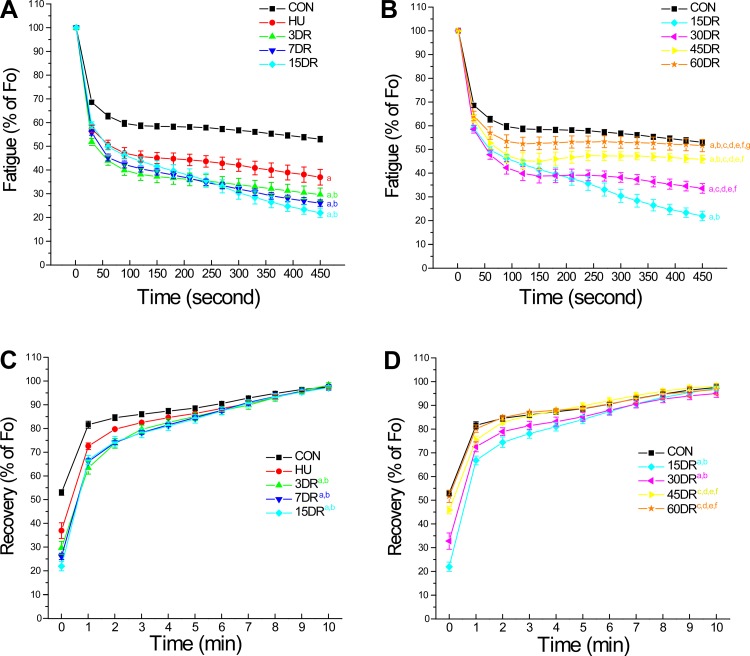Fig. 2.
Decreased fatigue resistance of soleus muscle after unloading and slow recovery during reloading. A: plotted at 30-s intervals, in situ intermittent fatigue protocol demonstrated that tetanic force normalized to tibial length dropped rapidly during fatigue compared with the prefatigue force (Fo). 4-wk HU significantly decreased fatigue resistance of soleus muscle, which was further worsened during the early phase of reloading (3–15 days). B: compared with the fatigability curves of HU and 15DR, the fatigue resistance of soleus muscle started to recover after 30 days of reloading. The recovery was slow and did not reach the control level after 60 days of reloading. C and D: postfatigue force development showed the same trends. Values are presented as means ± SE; n = 9 in CON, n = 4 in HU, n = 7 in 3DR, n = 6 in 7DR, n = 4 in 15DR, n = 8 in 30DR, n = 7 in 45DR, and n = 5 in 60DR. aP < 0.05 vs. CON; bP < 0.05 vs. HU; cP < 0.05 vs. 3DR; dP < 0.05 vs. 7DR; eP < 0.05 vs. 15DR; fP < 0.05 vs. 30DR, and gP < 0.05 vs. 45DR. Statistical analysis was performed using 2-way ANOVA with mean comparison with Tukey's test.

